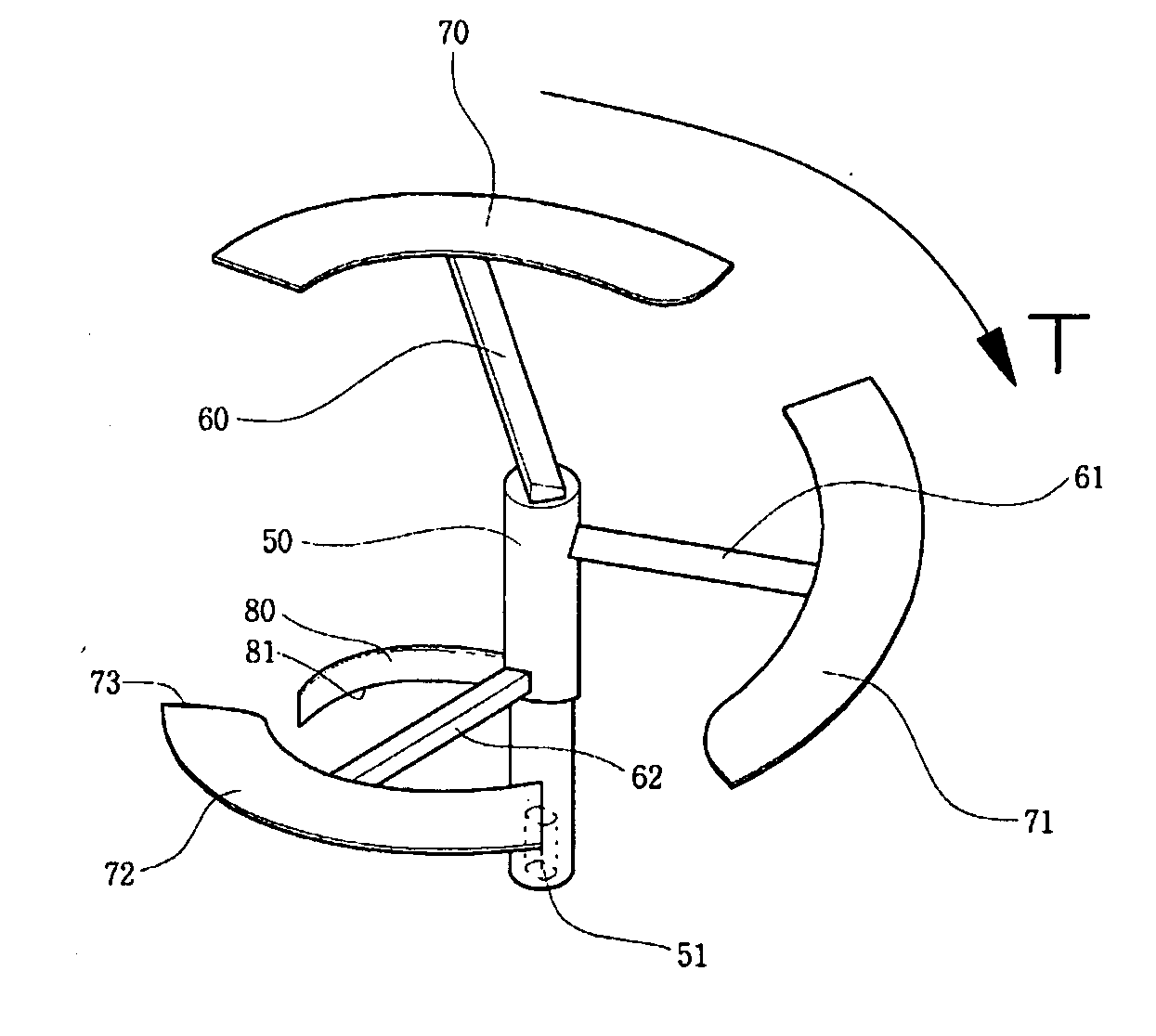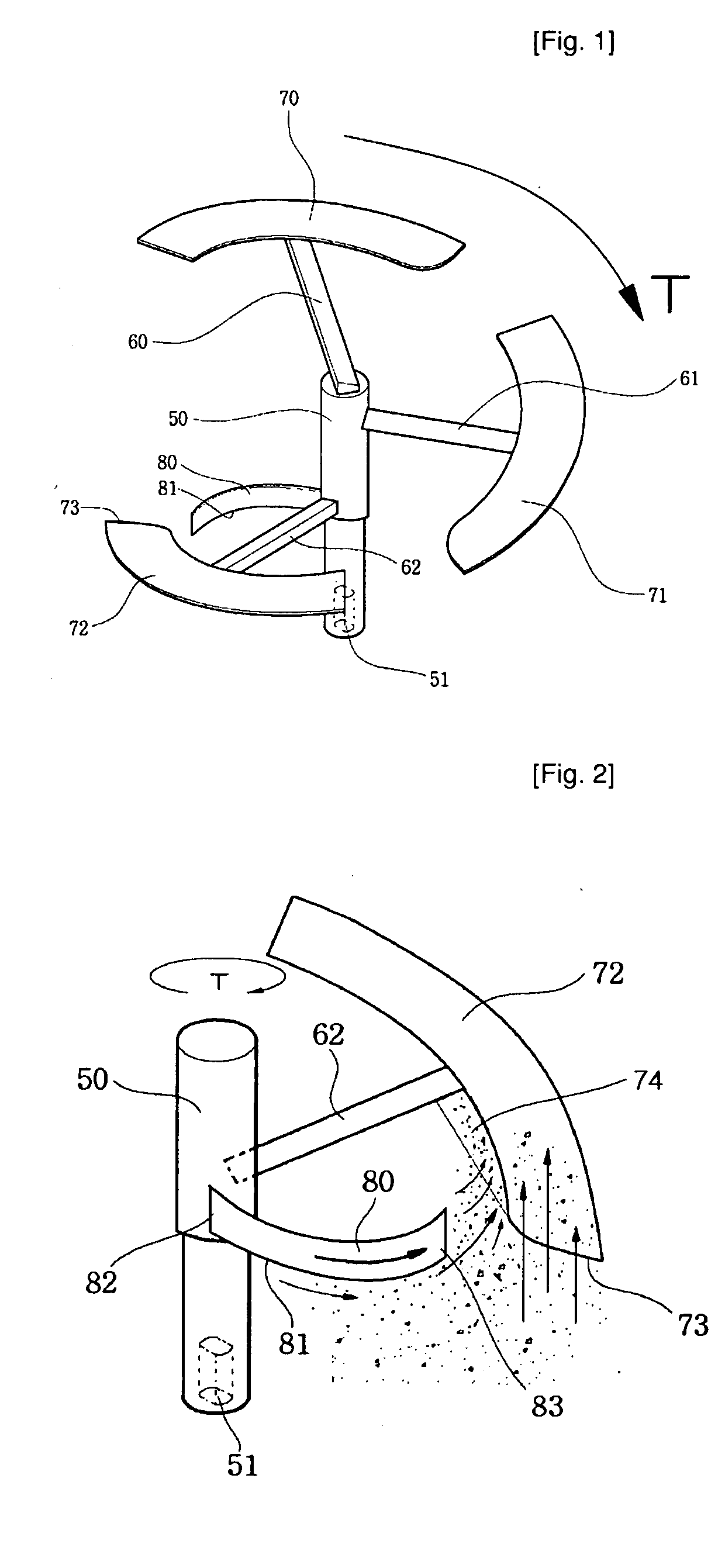Agitator for treating organic waste
a technology of organic waste and agitator, which is applied in the direction of biochemical equipment and processes, transportation and packaging, rotary stirring mixers, etc., can solve the problems of difficult selection of landfills, food waste generally has undesirable effects on the growth of crops, and bad smell, etc., to achieve maximum microorganism activity, remove food waste, and remove food waste
- Summary
- Abstract
- Description
- Claims
- Application Information
AI Technical Summary
Benefits of technology
Problems solved by technology
Method used
Image
Examples
Embodiment Construction
[0027]A preferred embodiment of the present invention will be described in detail below. However, the embodiment is only illustrative, and may have various modifications within the scope and spirit of the invention. Further, the present invention is not limited to the embodiment.
[0028]FIG. 1 is a perspective view of an agitator according to an embodiment of the present invention, and FIG. 2 is a view showing the movement of contents while the contents are agitated in the agitator according to the embodiment of the present invention.
[0029]As shown in the drawings, an agitator according to the embodiment of the present invention is used to treat food waste. The agitator includes a rotating shaft 50, connecting members 60, 61, and 62, agitating blades 70, 71, and 72, and an auxiliary agitating blade 80.
[0030]The rotating shaft 50 is a rod-shaped member that is made of stainless steel and extends in a longitudinal direction. A groove 51 to which a shaft of a drive motor is fitted is for...
PUM
 Login to View More
Login to View More Abstract
Description
Claims
Application Information
 Login to View More
Login to View More - R&D
- Intellectual Property
- Life Sciences
- Materials
- Tech Scout
- Unparalleled Data Quality
- Higher Quality Content
- 60% Fewer Hallucinations
Browse by: Latest US Patents, China's latest patents, Technical Efficacy Thesaurus, Application Domain, Technology Topic, Popular Technical Reports.
© 2025 PatSnap. All rights reserved.Legal|Privacy policy|Modern Slavery Act Transparency Statement|Sitemap|About US| Contact US: help@patsnap.com



